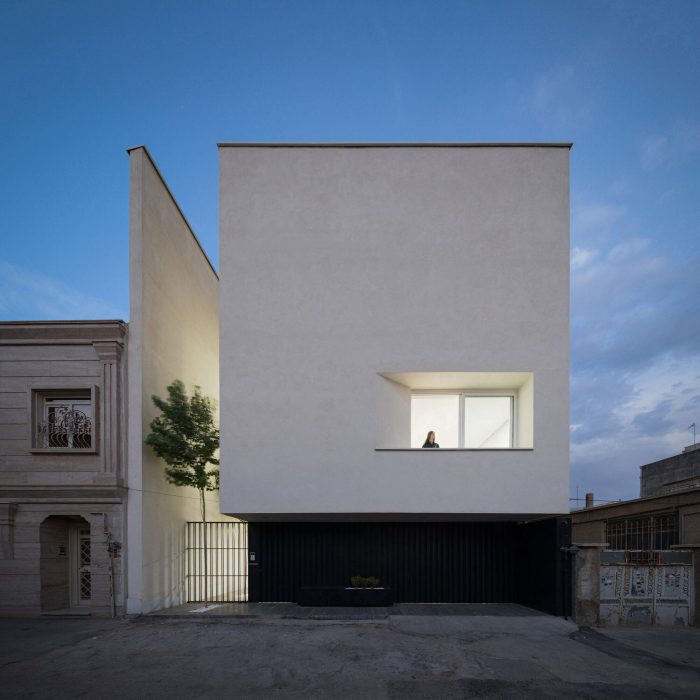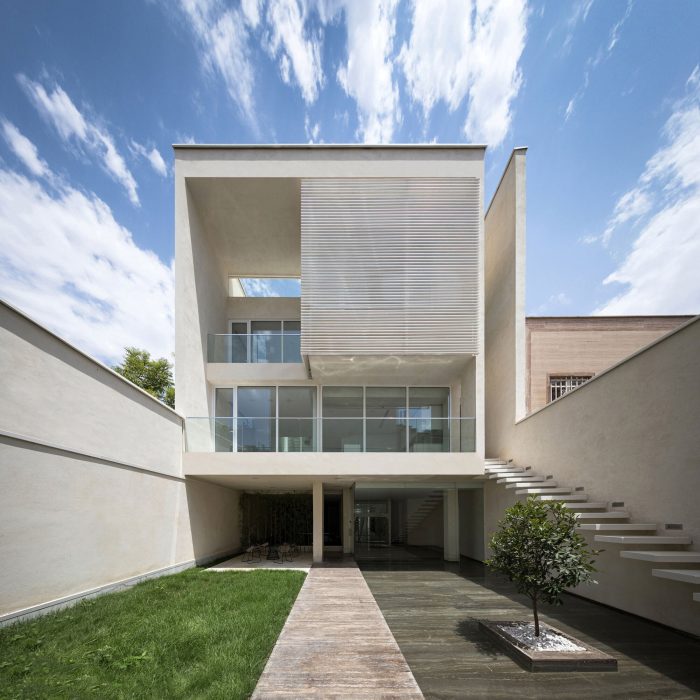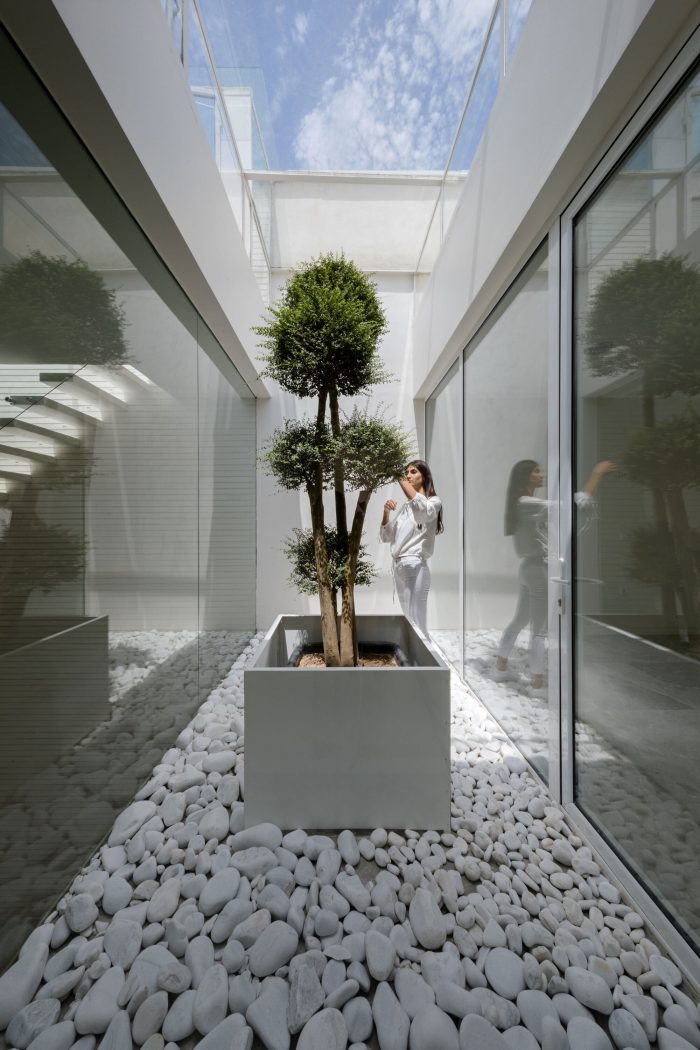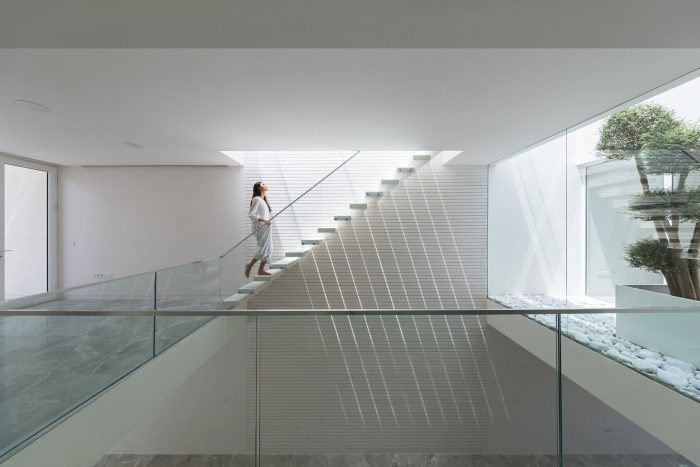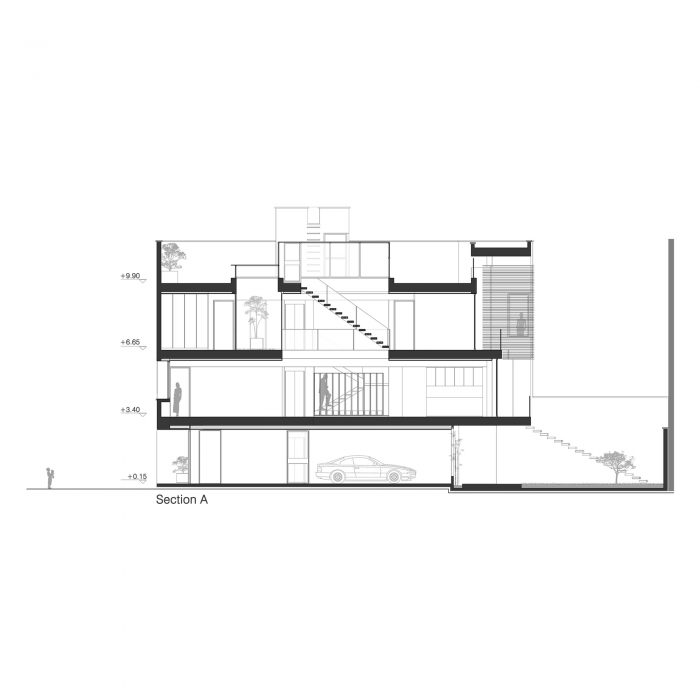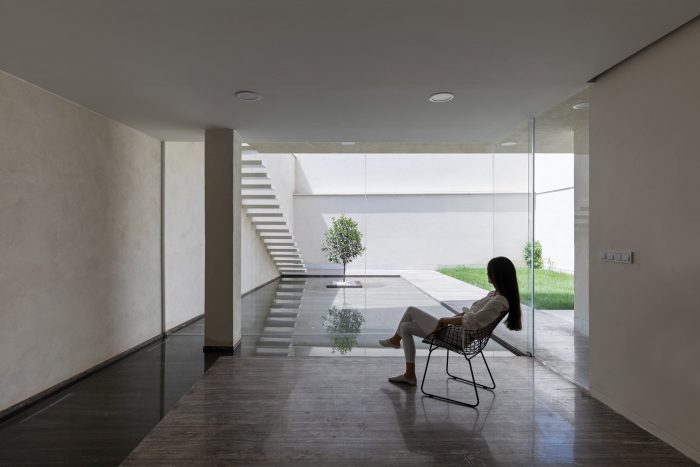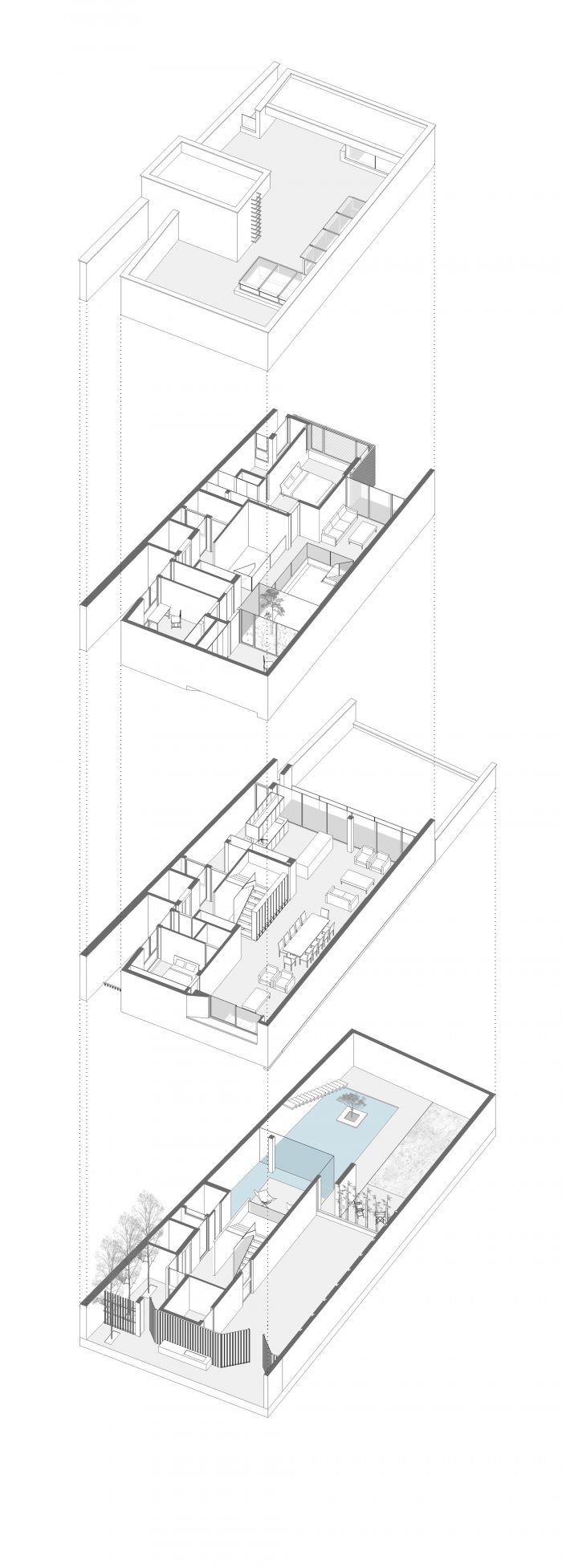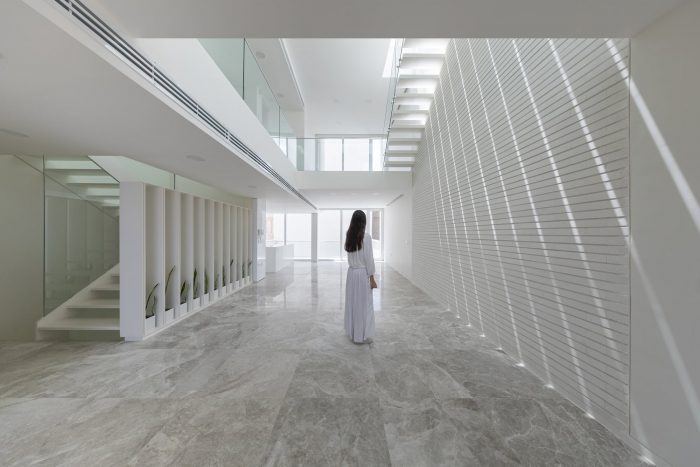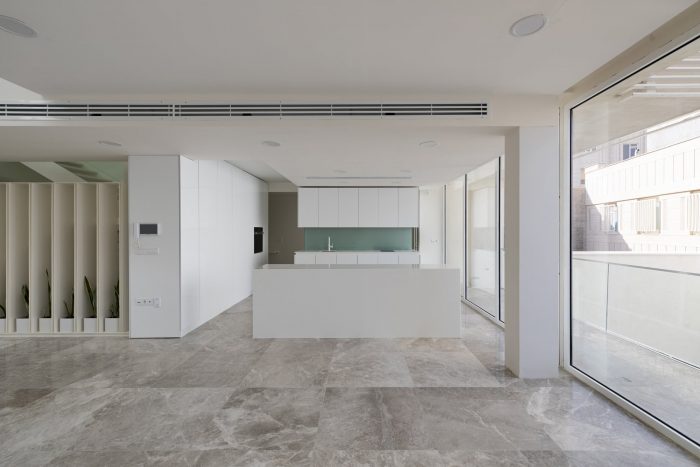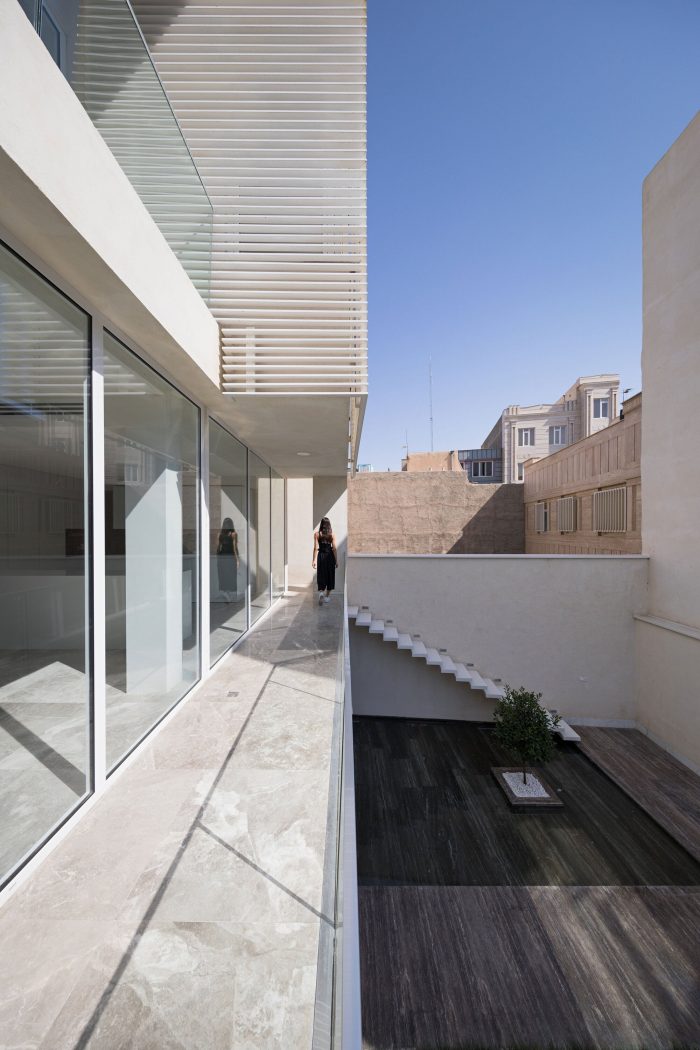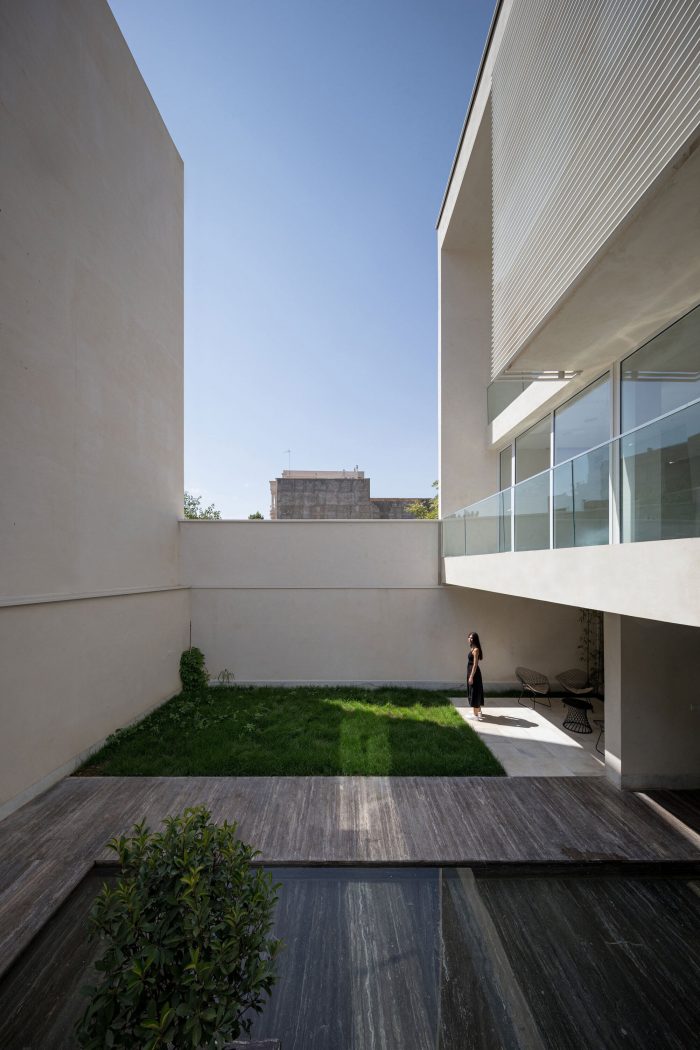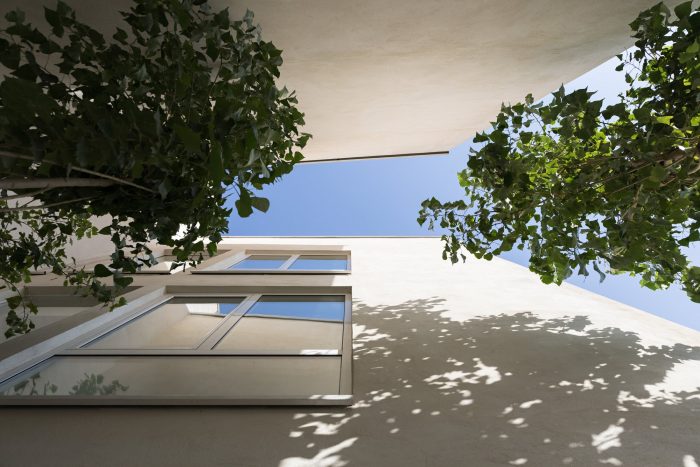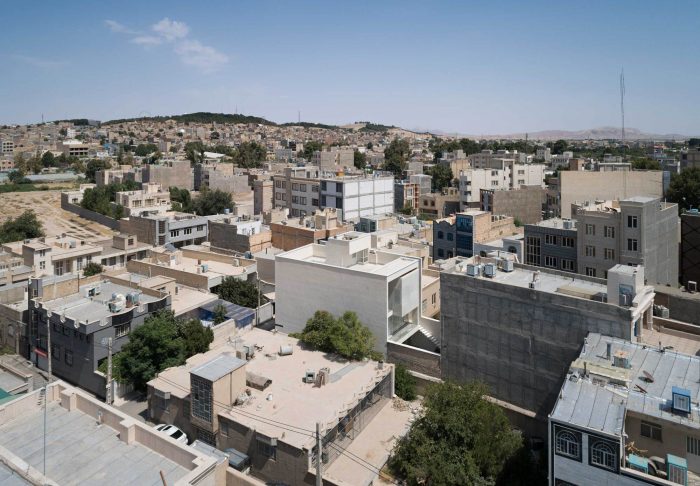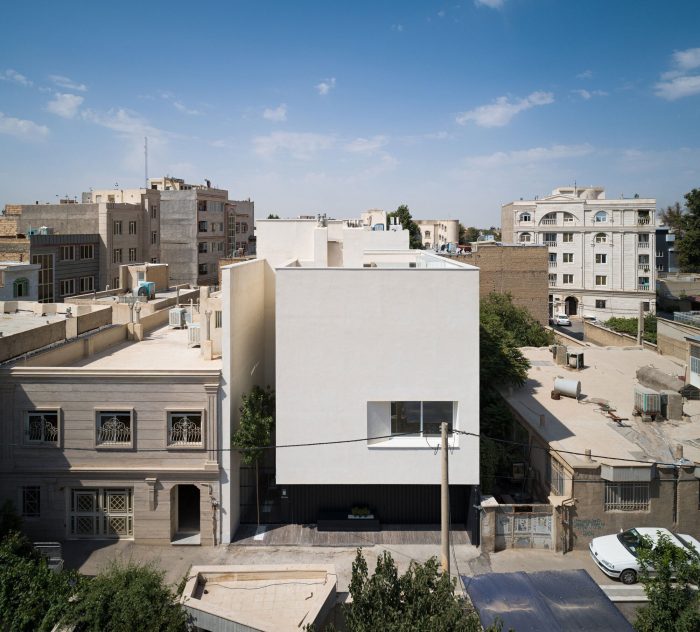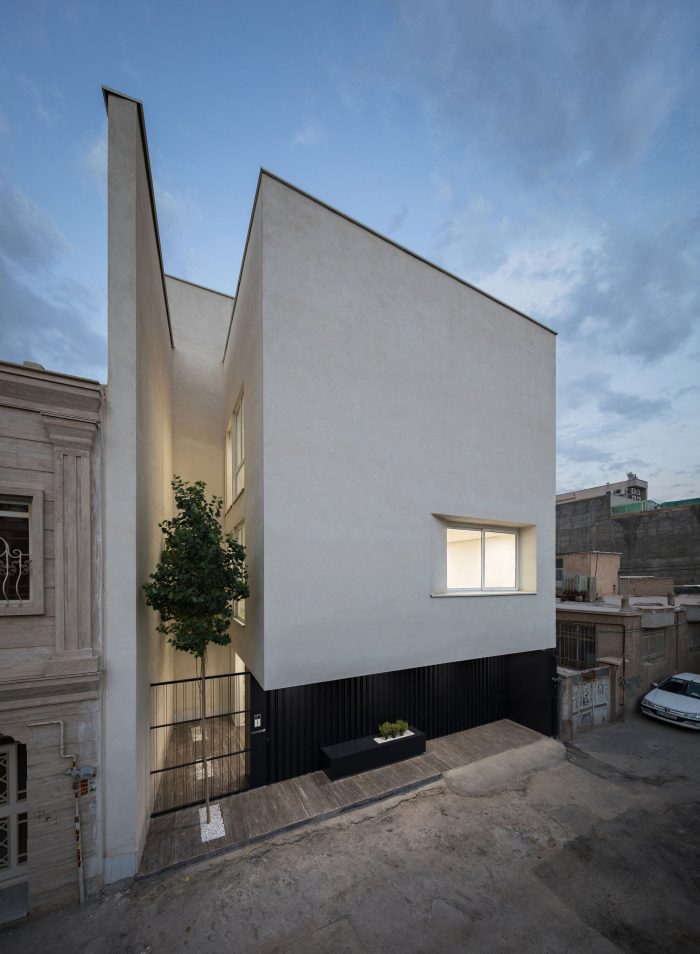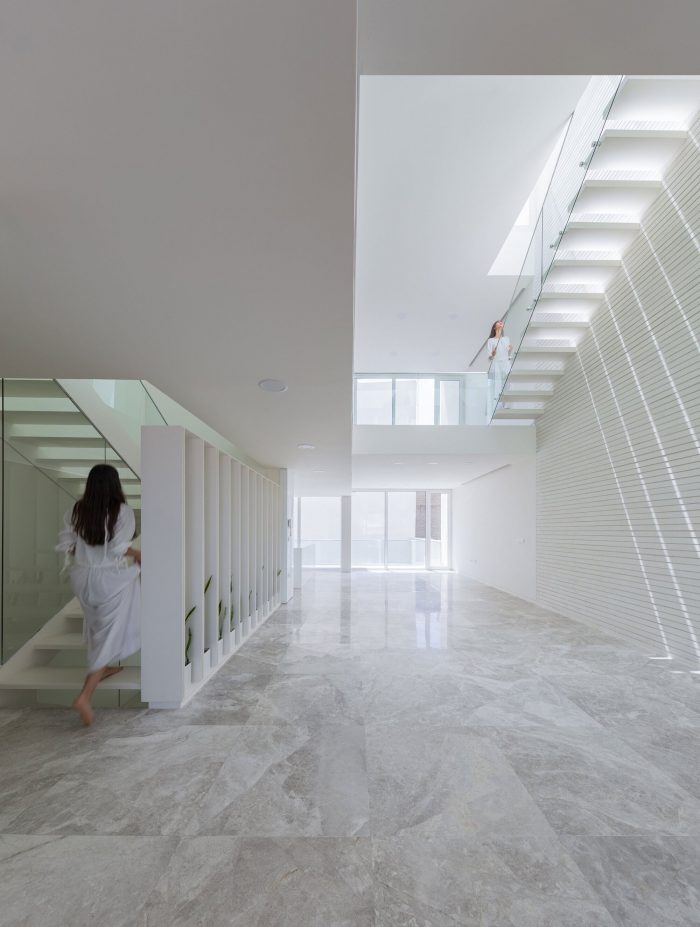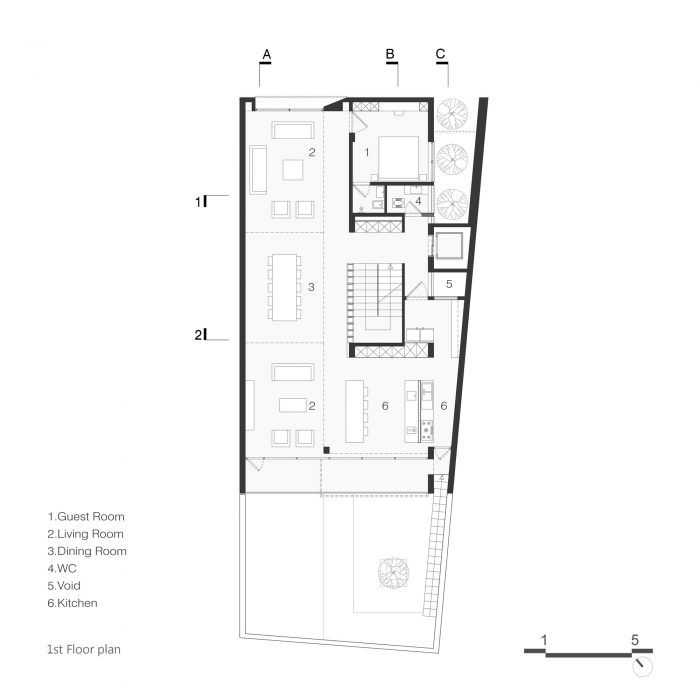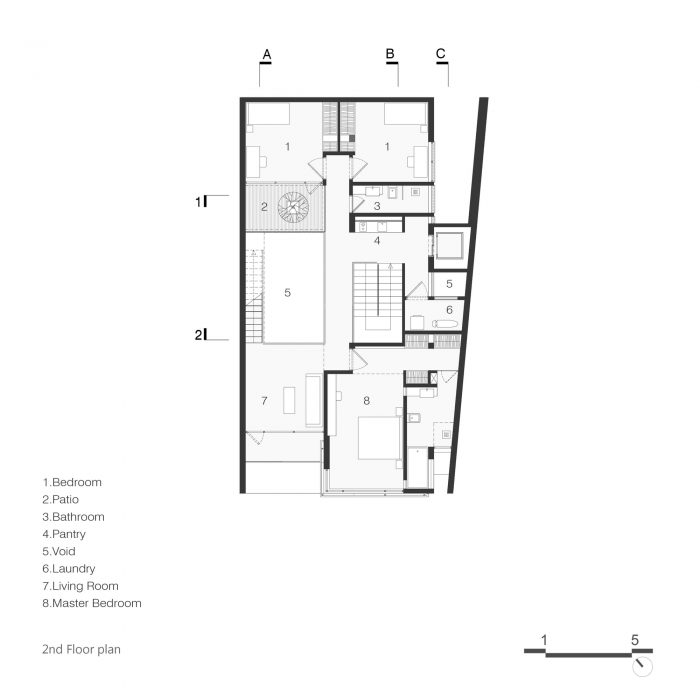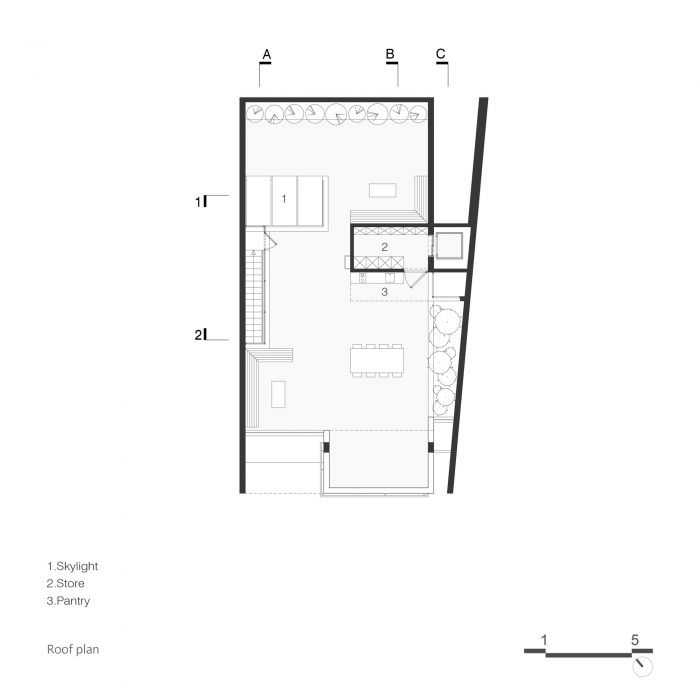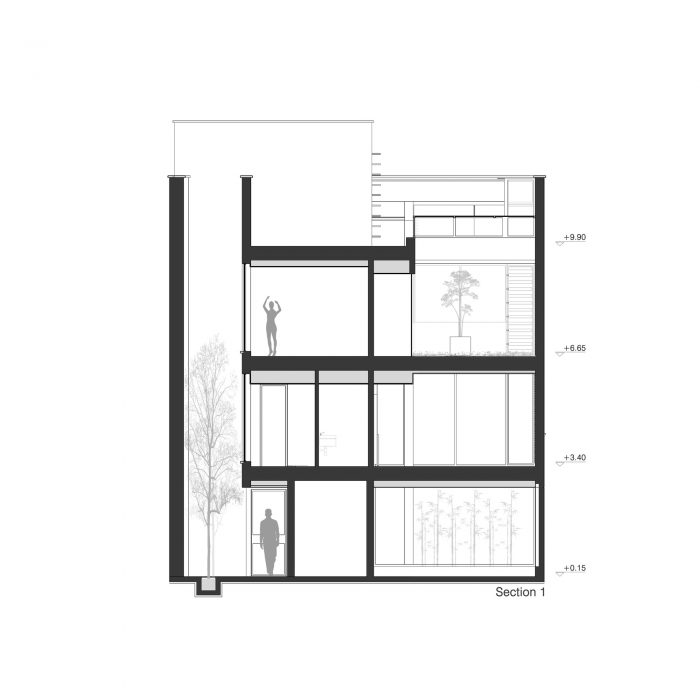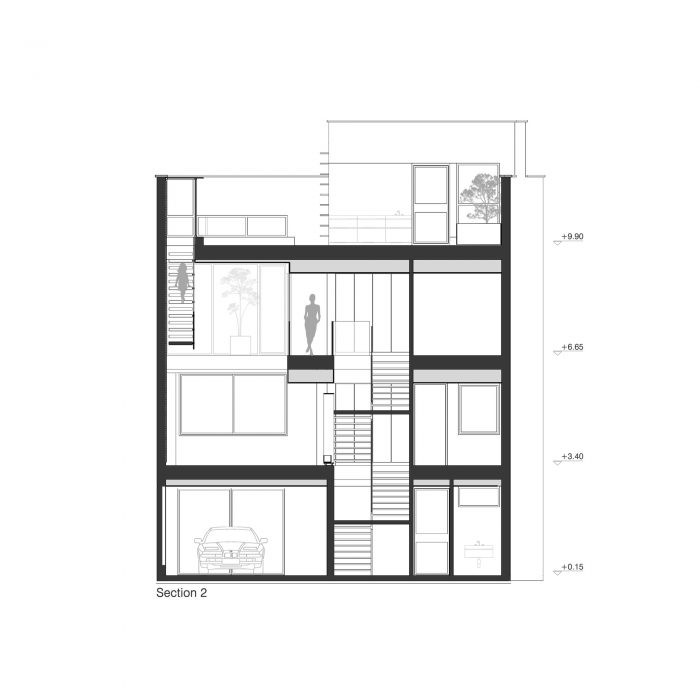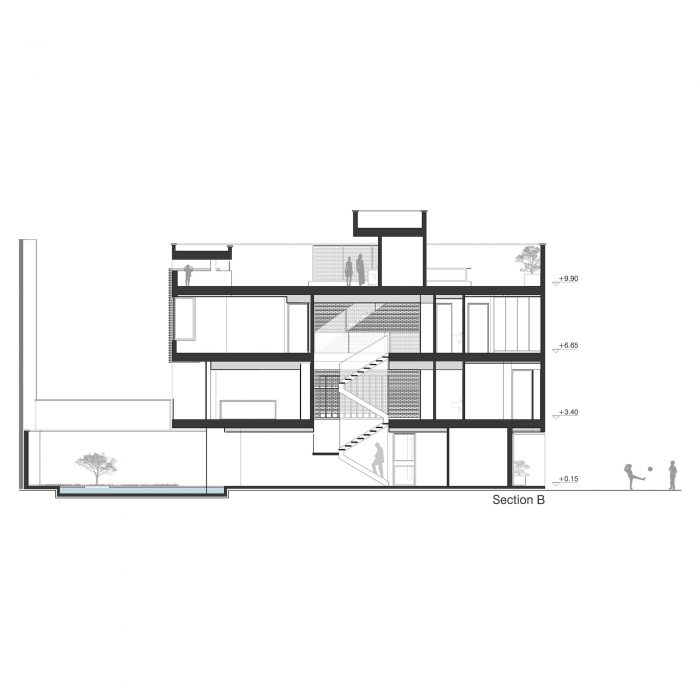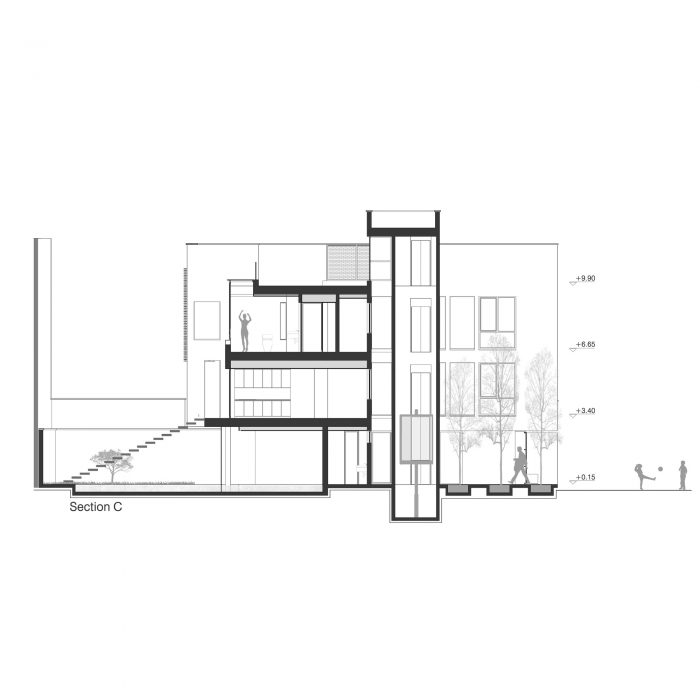这个房子位于伊朗首都德黑兰附近的一个小镇上。客户不得不在卖掉他的土地以便他们可以移民到首都和建造一个永久的房子之间做出决定;这个房子除了提供宁静之外,还可以让家人体验不同的生活方式。设计过程中的主要目标是在这所房子和它的邻居之间建立一种差异化的联系;换句话说,它在邻里之间是如何被感知的,以及它如何对城市形象做出贡献。这座房子是在分离和与周围环境的联系的边界上设计的,”可以看到什么,我们如何被观察到?”
This House is located in a small town near Tehran, the capital of Iran. The client had to make a decision between selling his land so they could migrate to the capital and building a permanent house; a home where the family could experience a different way of life, in addition to providing tranquility. The main goal in the design process was to create a differentiating connection between this house and its neighbors; in other words, how it is perceived in the neighborhood and how it contributes to the urban image. This house was designed on the border of separation and connection with its surrounding environment, “what can be seen and how are we observed?”
在一个缺乏监管标准导致城市面貌动荡的背景下,我们的方法是创造所需的视觉平衡,同时不造成上述的混乱。另一方面,客户希望除了在相邻的建筑中保持尊重外,还能有最多的隐私,这导致设计强调简单和内敛;因此,只有一扇窗户,将街道的直接视野降到最低,同时通过将一部分土地捐给人行道,并在房子的入口处创造一个院子,也给了邻居们最大的尊重和关注。建筑的层次结构从一个陌生人坐在入口旁边的平台上开始。继续穿过入口处的院子,我们来到了一个迎接访客的空间;一个与水池相邻的空间,伴随着水声。
In a context where the lack of regulatory standards has caused turbulence in the urban face, our approach was to create the desired visual balance while not contributing to the aforementioned disorder. On the other hand, the client’s desire to have the most amount of privacy in addition to a respectful presence among the neighboring buildings led to a design emphasizing simplicity and introversion; therefore, the direct view of the street was minimized with only one window, while the neighborhood was also given the most respect and attention by donating a part of the land to the sidewalk and creating a yard in the entrance of the house. The hierarchy of the building begins with a stranger sitting on the platform next to the entrance. Continuing through the courtyard in the entrance, we arrive at a space greeting the visitors; a space adjacent to the pool, accompanied by the sound of water.
一楼的设计是为了接待客人,而二楼则完全属于家庭的隐私。一楼的庭院已经成为一个隐蔽和放松的景观,有一个游泳池和一个小院子,而屋顶通过利用护栏的高度所创造的空间,成为房子的功能庭院;为此,电梯上升到房子的屋顶,以及对室内空间中心特别重要的楼梯。安置在通往屋顶的楼梯上的天窗增加了一般空间的自然光量,同时也创造了各种光影的场景。除了上述品质外,中央天窗还为最小的孩子的卧室提供了直接的光线和新鲜空气。
The first floor is designed to accommodate the guests while the second floor completely belongs to the privacy of the family. The ground floor’s courtyard has become a secluded and relaxing landscape with a pool and a small yard, while the roof becomes the functional courtyard of the house by taking advantage of the space created by the height of the Parapet; For this reason, the elevator goes up to the roof of the house as well as the stairs that hold special importance to the center of the interior space. The skylight placed on the stairs accessing the roof has increased the amount of natural light in the general spaces while also creating various scenes with light and shadows. In addition to the aforementioned qualities, the central skylight also provides direct light and fresh air to the youngest child’s bedroom.
在这个项目中,我们以与主立面相同的谨慎和关注对待临时的侧视图和南部邻居的废弃北视图。所有的外墙都用白水泥覆盖,由于资金问题,最后的涂层被推迟到了未来。皮什瓦之家已经超越了满足客户的要求,以其庄重的简约,成为土地及其价值的一个转折点。
In this project, we approached the temporary side views and the abandoned north view of the southern neighbor with the same care and attention as the main facade. All the facades were covered with white cement and due to financial issues, the final coating was postponed to the future. Pishva House has gone beyond meeting the demands of the client and with its solemn simplicity, has become a turning point for the land and its value.
Architects: Ali Haghighi Architects
Area : 450 m²
Year : 2020
Photographs :Mohammad Hassan Ettefagh
Design Team : Ali Haghighi, Babak Nadri, Matin Hatam
Project Manager : Majid Izadyar
Civil Engineer : Mohammad Reza Kamyab
Mechanical Consultant : Mehdi Mahyari
Electrical Consultant : Sara Ramezani
Construction : Akbar Rahimi
Graphic Presentation : Mohammad Mahdi Zamani
Country : Iran


